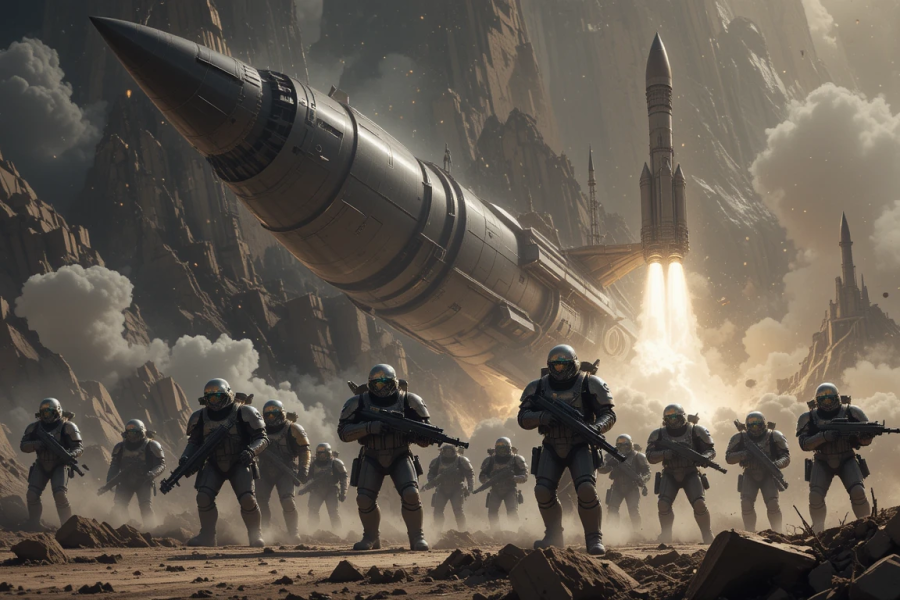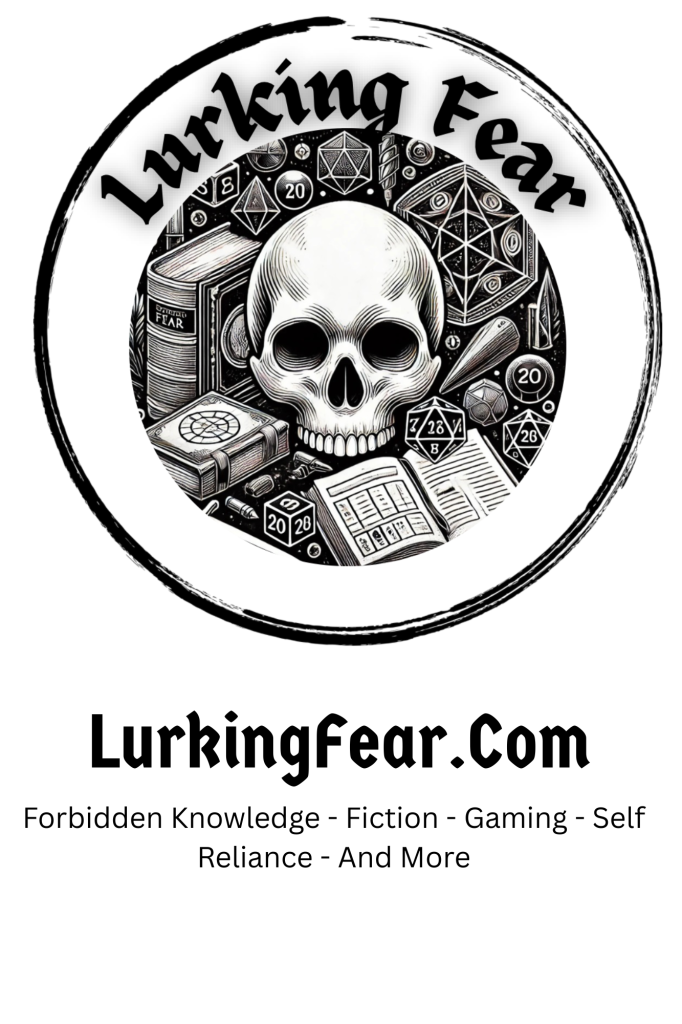- Key Takeaways
- What Defines Underground Science Fiction?
- The Historical Trajectory
- Blurring Genre Boundaries
- Challenging Genre Conventions
- The Digital Underground Paradox
- Address the tension between underground authenticity and mass digital exposure
- Analyze how online platforms both empower and dilute underground movements
- Explore the risks of commercialization, surveillance, and co-optation in digital spaces
- Recommend strategies for maintaining subversive edge and community integrity online
- Lasting Influence
- Conclusion
- Frequently Asked Questions
- What is underground science fiction?
- How did underground sci-fi develop historically?
- How does it blur genre boundaries?
- How does it challenge genre conventions?
- What is the “digital underground paradox”?
- Which authors or works show lasting influence?
- How can newcomers find and support underground sci-fi?
Key Takeaways
- Underground science fiction focuses on underground locations and secret communities and emphasizes insurgency, freedom, and opposition, frequently blending speculative concepts with horror, political themes, and exploits. Employing underground spaces as symbols of repression and discovery, they take on hegemonic forces.
- Core philosophy focuses on outsider perspectives and countercultural values that challenge authority figures and expose taboo knowledge. Cast protagonists as underground agents moving through secrecy and subversion to bring alternative futures to light.
- Narrative style, which thrives in gritty, experimental and non-linear techniques that build claustrophobia and tension. Use unreliable narrators, non-linear time frames, and rich spatial description to maintain mystery and engagement.
- Distribution flourishes in DIY ecosystems — zines, indie presses, forums, collaborative networks — that sidestep the gatekeepers. Foster niche communities through digital self-publishing and long-term word-of-mouth while preserving creator independence.
- Historical development connects 19th-century underground adventures to New Wave experiments, cyberpunk’s virtual underworlds, and the zine era’s grassroots circulation. I map influences from mining, wars, social upheavals and global youth culture to contextualize new pieces.
- Continuing effect features fuzzy genre lines, crossover with horror and political writing, arguing over online exposure versus staying true. Protect subversive edge with privacy-first tools, clear community standards, and anti-commercial design. ===
Underground science fiction is speculative fiction crafted and distributed beyond established venues, typically in zines, tiny press runs, message boards, and tiny online communities.
It prefers audacious concepts, shoestring budgets and rapid prototyping, with motifs such as surveillance, biohacking, climate futures and streetwise urban tribes.
Anticipate mixed media, mini-series and make-it-yourself art that push narrative and technology boundaries.
To contextualize the field, the following sections delineate important epochs, media types, avenues of access, and tangible strategies to discover exceptional pieces.
What Defines Underground Science Fiction?
Underground science fiction constructs subterranean worlds—hollow Earths, buried cities, and cave systems—to assay might, remembrance, and life. It blends the speculative with horror, politics, and adventure, employing tunnels, shafts, and labyrinths as both stage and metaphor. From Dante’s Inferno to THX 1138, artists utilize underground settings to investigate domination, confidentiality, and the primal impulse to explore.
1. Core Philosophy
Stories focus on marginalized and voiceless communities. Protagonists are miners, refugees, rebels, archivists, or dissidents who chart paths others overlook. Their goals tend to be modest but urgent: a safe well, a hidden archive, a path to daylight.
They thumb their nose at tropes by swapping shiny futures for secret knowledges, secret archives, secret language. Autonomy is at the center, so characters carve out territory, define their own laws, and establish micro-societies in habitation tunnels or cavern communities.
The underground itself stands in for repression and hidden truths, yet points to other ways to live, as in feminist utopias like Pantaletta: A Romance of Sheheland and inverted-value lands in A Strange Manuscript Found in a Copper Cylinder.
2. Narrative Style
A lot of the texts employ jagged, non-linear plots that simulate stumbling around in the blackness, punctuated by jump cuts, maps-as-chapters, and tight scene beats that trace oxygen, light, and distance in meters.
Unreliable narrators and split viewpoints heighten doubt: a guide omits shafts; a log conflicts with sensor data; a rumor travels faster than radio. Genre lines blur: body horror meets political allegory, slow-burn thriller meets expedition report.
Vivid sensory cues—wet stone, stale air, bioluminescent fungi, echo lag—draw readers deep and ratchet up suspense.
3. Distribution Methods
Underground SF typically propagates through zines, indie presses and forums to eschew gatekeepers. Word-of-mouth accumulates at niche festivals and small cons.
Digital self-pub, blogs and social channels reach tight-knit groups, where collaborative writing, fan fic and remix culture make worlds live across threads, wikis and shared maps.
4. Cultural Roots
Originating with mining towns, metro lore, catacombs, bunkers and actual secret societies, history feeds it: the Underground Railroad and resistance cells model covert networks and codebooks.
Folklore and Indigenous tales of hollow lands and hidden spirits and subterranean rivers established deep temporal contexts. Outlaw communities and activists provide lived strategies of danger, love, and concealment.
|
Motif |
Hidden Civilizations |
Lost Empires |
Secret Societies |
|---|---|---|---|
|
Meaning |
Concealed peoples adapting below |
Ruins with advanced relics |
Covert groups shaping power |
|
Examples |
Hollow Earth tribes, Dwemer-like cities in Skyrim |
Buried metropolises with steampunk tech |
Rebel cells in THX 1138 |
5. Thematic Focus
Survival and adaptation drive plots: light rationing, fungal farming, air cycling, and heat budgets. Isolation reconfigures minds, leading us to question memory, time, and community.
Countless titles satirize capitalism and state control with resource scrips, labor quotas, and surveillance corridors. Exploration and the unknown stay at the core—new chambers, bizarre fauna, and eerie echoes suggesting enormous systems.
Familiar tropes remain—hollow earth, subterranean civilizations, and monsters—but morph with technology from clockwork contraptions to drones and steampunk manifolds.
The Historical Trajectory
Underground science fiction evolves from 19th-century machine and subterranean fiction to contemporary networked subcultures. Its arc echoes changes in business and conflict, mapping how authors explore the edge of the underground realm and the private and public worlds.
New Wave Precursors
The late 19th century laid the foundation for subterranean fiction. The ascent of machines and mechanization pulled eyes down toward the earth, to burgeoning mines and work remade by steam. From Richard Trevithick’s 1804 locomotive to wider rails gouging through bedrock, tunnels became emblems of velocity and danger. Writers folded this into their narratives, exploring the concept of an underground world.
Edward Bulwer‑Lytton conjured hidden orders and occult forces, while Mary Lane and others flirted with futurism’s magnetism. Hollow Earth notions circulated in pop science and pulp, with Charles Willing Beale and Wardon Allan Curtis locating entire ecologies beneath one’s soles, situating caverns as other histories of lost civilizations.
The Industrial Revolution nourished Jules Verne’s audacious jumps—submarines in 1870, inner‑Earth expeditions—demonstrating how science could steer story even when equipment hadn’t yet been invented. At the opening of the 20th century, futurism repositioned the future as design space, not prophecy.
Counterculture in the 1960s–70s changed its tune. The New Wave punctured neat spaceship yarns with social commentary, stream‑of‑consciousness, and drug‑tinted visuals. Underground settings became both literal and social, connecting cave systems and urban basements, squats, and clubs.
-
J. G. Ballard, The Drowned World and Vermilion Sands: inner landscapes, entropy, and media decay. The “underground” as psychic geology.
-
Michael Moorcock’s New Worlds magazine: collage prose, taboo topics, and anti‑establishment editing that gave experimental voices a lab.
-
Ursula K. Le Guin, The Dispossessed: anarchist physics, walls and corridors as moral infrastructure, tunnels as routes out of hierarchy.
-
Samuel R. Delany, Dhalgren and Nova: fragmented cities, queer subcultures, and coded networks. Dense style as resistance.
-
Philip K. Dick, A Scanner Darkly: surveillance, identity drift, and drug culture. The underground as unstable reality.
-
Joanna Russ, The Female Man: gendered systems, insurgent forms, sublevel spaces as critiques of power.
Cyberpunk’s Rise
Cyberpunk wired underground aesthetics to digital apparatuses, from caves to code. Peripheral hackers and street medics and gig mercenaries battled platform states and zaibatsu. Black markets took the place of secret grottoes, while data havens decayed into catacombs.
Physical tunnels surrendered to virtual layers. Bulletin boards and early nets and warez scenes became new burrows where pseudonyms stood in for maps. Power diffused through servers, resistance diffused through protocols.
Songs and film establish the aesthetic and pace. William Gibson’s Neuromancer sketched neon alleys and ICE-walled vaults. Pat Cadigan followed body mods and media drift. Anime such as Akira and Ghost in the Shell merged biotech with riot policing.
Games from Shadowrun to Deus Ex trained players to explore vents, backdoors and backstories. Global youth culture carried the style into music, streetwear, and LAN cafes.
The Zine Era
DIY print sustained the scene between ebbs and flows. Small presses, short runs, stapled edges, offset sheets. Low cost postage carried tales across boundaries.
Communities constructed norms from the bottom up. Readers became editors, and editors exchanged rights on faith. Conventions and mail‑order lists bound local chapters with pen pals and tape traders. Wars, recessions, and social unrest shaped topics: fallout shelters, blackouts, and bunker slang became shared language.
- Open calls allow emerging authors to experiment with challenging styles and blend poetry with physical science.
- Clip‑art and paste‑up created rapid visual essays to chart technological folklore.
- Inter-genre swaps mashed horror caves, mining ballads and hacker messages.
- Review columns mapped connections between actual labs and fiction ones, holding tech to account.
- Mail-to-mail peer review disseminated craft tips faster than formal journals.
- Reprint packets archived lost pulp of hollow Earth, Pellucidar and cave drills.
- Local zines followed mining news, new tunnel digs, new sensors in meters, connecting data with stories.
Blurring Genre Boundaries
Underground sci-fi bleeds into horror and fantasy and political lit, pushing at how we delineate identity and power and social control. It broadens the focus on otherness, a subject that deepened once second-wave feminist and environmentalist waves reframed bodies, ecosystems, and gender as battlegrounds.
Boundaries, between genres or social groups, are constructed and enforced–these works dismantle who constructs them, for whom, and at what expense.
- Hybrid works that resist neat labels:
- Annihilation (novel/film): eco-horror, weird SF, expedition narrative.
- The Girl With All the Gifts: biomedical SF, zombie horror, ethics of care.
- District 9: alien contact, apartheid allegory, body horror.
- Under the Skin: alien viewpoint, feminist critique, existential horror.
- The City & The City: police procedural, cognitive estrangement, political SF.
- The Green Knight (adjacent): mythic frame, science-like rules of fate and time.
Underground Horror
Subterranean horror thrives in those liminal spaces where science runs thin and fear fills the void. Movies and comics deploy mole people, tunnel zombies, and cannibal clans as corporeal avatars of otherness, projecting societal fears onto characters who dwell in underground settings and beyond legal order. These narratives often explore the concept of lost civilizations that once thrived beneath the surface world.
Tunnels, catacombs, and caves condition the sensorium. Tight corridors compel single file action, limit views, and increase resonant echo, which boosts surprise and maintains fear on edge, reminiscent of the underground cave system found in various subterranean worlds. Ash dust, dripping water, and flickering headlamps—these indicators remove control and condense the timeline.
Ash dust, dripping water, flicker of headlamps—these indicators remove control and condense the timeline. Touchstones include Death Line (1972), which posits railway maintenance workers who are abandoned and go feral; Resident Evil (2002), featuring a sealed lab-city in which corporate biotech refracts class and labor exploitation; and the transgressive August Underground series, which leverages faux-verité to interrogate voyeurism and complicity.
All of them regard the underground as a regimen of failed care. These tales echo anxieties about blackout, loneliness, and latent damage. They indicate hazardous infrastructure, clandestine dumping, and governmental indifference, revealing secrets of the underground world.
Monsters here are not fantasy escapes; they’re audits of what society refuses to look at, shedding light on the dark corners of our civilization.
Underground Political Books
Underground political books uncover state terror, secret police work and gray budgets, frequently distributed as samizdat or zines or as encrypted PDFs. They map secret resistance webs, from mutual aid cells to prison libraries, and record techniques, safe drop boxes, steganography, shifting editors, that preserve life.
Literature moves activists by providing such portable schemas. A brief manual on counter-surveillance can get into a protest medic’s hand. A prison reading group can read a dystopian novel as a rehearsal for organizing.
Reach expands when texts wander into the vernacular, narrate process, and swap strategy by strategy. Impact on democratic and liberation movements appears in camp manuals and courtroom defenses and neighborhood schools.
Since sci-fi is political anyway, a number of them utilize near-future settings to effectively model decision points under repression, making risks imaginable without pinpointing targets.
Authors use allegory and coded metaphors to avoid prohibitions. A “ministry of air” could substitute for a telecom regulator throttling speech.
Still, care is needed: branding Indigenous figures as “magical” flattens real knowledge systems and fuels disrespect. The hybrid genres function optimally when they respect context, provide attribution, and eschew extractive clichés.
Challenging Genre Conventions
Underground sci-fi transcends rigid conventions and experiments with the boundaries of the genre. It follows in the footsteps of early experimenters like Mary Shelley, Johannes Kepler, and Cyrano de Bergerac, and plays with form as a tool, not a prison.
Authors can defy genre conventions by cramming horror, politics and speculative science into a single compact setting. The mix works when each strand carries weight: body horror to show the cost of biotech, policy debate to map power, and near-future tools to make the stakes clear.
The New Wave of the 60s and 70s leaned hard into this, often with a “literary” pose that valued style and interiority. That spirit still comes in handy. It appears when a tale combines climate terror with a labor strike, or when a first-contact narrative functions as a work of grief.
Crossing genre lines—family drama in E.T., the Extra-Terrestrial, bleak art-film in Melancholia, satire in Spaceballs—showcase that tonal shifts can expand appeal without sacrificing nuance.
Questioning mainstream values sits at the core. Authors like Philip K. Dick, William Gibson, and Octavia Butler use future tech to ask basic questions about self, class, gender, and truth. Their work shows that genre lines are porous.
Social, feminist, and anthropological sci-fi add methods: test a society as a system, center power and care, and treat culture as technology. These frames help a writer turn a simple gadget into a lens on work, migration, or kinship.
Asimov’s Foundation and Herbert’s Dune use grand arcs to study statecraft and belief. The lesson is not scale but focus—build your logic of change, then let small acts bend large systems.
Experiment with structure, character, and setting to break formulas. Unusual forms—reports, interviews, nested logs—can surface bias and limit. Lem’s Solaris and Dick’s Do Androids Dream of Electric Sheep? Show how fractured bodies of text can match fractured minds.
Try a second-person field manual to map a city run by an algorithm, or a braided plot where each thread tracks a different rule set. Character can resist the lone genius trope; write teams with gaps, care work, and conflict.
Setting can shift from planets to streets, from labs to kitchens, and still carry rigorous science.
- First contact: Conventional: benevolent aliens teach peace. Underground: opaque signals force risky, local decisions.
- AI: Conventional: rogue AI seeks world control. Underground: fragile, unionized AIs bargain for maintenance rights.
- Space opera: Conventional: heroic captain saves empire. Underground: supply chain clerks audit fuel debt on rim worlds.
- Cyberpunk: Conventional: lone hacker vs megacorp. Underground: neighborhood co-ops fork city firmware in daylight.
- Time travel: Conventional: fix a key event. Underground: time loops expose who benefits from “reset.”
The Digital Underground Paradox
Underground science fiction thrives on tight-knit groups, rare books, and common passwords, often exploring themes of subterranean fiction. Digital tools can crack open these circles while also compressing them, revealing a paradox in how scale and metrics reconfigure trust and risk.
Address the tension between underground authenticity and mass digital exposure
Authenticity in underground work comes from constraint: low-budget zines, limited runs, and niche forums that filter noise. Mass exposure in feeds and on platforms displaces those filters with ranking systems and likes and watch time.
The result is a shift in tone and form: short clips over dense essays, safe tropes over strange ideas, and high-contrast art that scans fast on a small screen. A micropress novella that once floated hand to hand now requires thumbnails, tags and response loops.
That pressure makes creators feed-bait. Fans then scan for velocity. The danger is that the scene will lose its slow, strange edge that made it feel underground in the first place.
Analyze how online platforms both empower and dilute underground movements
Platforms lower entry costs, link distant peers, and give real tools: shared drives for drafts, version control for collaborative worlds, and tip jars for micro-patronage. A Lagos writer can co-edit in real time with a Warsaw artist, track changes and ship a PDF to readers within minutes.
Its discovery gets better via cross-tags such as solarpunk, afrofuturism, or post-cyberpunk. Those very systems water down signals. Algorithmic sorting smooshes nuance into genre buckets.
A clever pamphlet gets packaged with some bland AI fan art since they have a tag in common. Moderation bides silenced taboo topics. Content ID flags collage work that quotes vintage pulp covers.
The grid loves repeatable formats, so experiments outside the mold sink below the surface even if the craft is good.
Explore the risks of commercialization, surveillance, and co-optation in digital spaces
Commercialization pushes scenes in the direction of sponsor-safe looks. Merch-first rollouts sub in for rough drafts. Surveillance is baked into analytics: click paths, dwell time, and location logs.
Pseudonymous accounts can be connected via device information. Co-optation follows once a style trends: big imprints strip visual cues, file off politics, and sell a clean “underground” look.
TOS shifts can memory-hole archives without notice. Data scraping drags zine microfiction into model training sets, then spits it back as insipid synth text that competes with its source.
Recommend strategies for maintaining subversive edge and community integrity online
Keep key archives on self-owned sites in open formats. Employ mirrors and off-site backups. Split public and private: teaser feeds for reach, invite-only forums for deep work.
Use light analytics and turn off snoopy trackers. Issue publish licenses that prohibit model training on your writing and artwork. Watermark with faint hashes to track abuse.
Establish a small peer review loop to maintain high quality. With curators, rotate to avoid gatekeeping. Record culture, not only policies, in a concise manual.
When scaling — add friction by capping membership, then federate into linked cells rather than one mega-server. Teach new members opsec basics: alias hygiene, encrypted chat, and safe payments.
Lasting Influence
Underground SF makes enduring tracks on books and screens and songs. It propagates through small presses, film schools, fan circles, and forums. Its influence arrives in moments when no-budget concepts become studio standards, when outlawed or niche content becomes mainstream conversation, and when audacious worldbuilding transforms what stories are capable of, especially within the context of subterranean fiction.
Underground ideas tend to seed mainstream movies and books. THX 1138 provided the template for sterile control states, biometric tracking, and life underground, which subsequent films scaled up with big effects but maintained the same tight focus on surveillance and loss of self. Connie Willis’s Doomsday Book showed that rigorous structure and humane stakes could still bring convoluted timelines to a large audience, winning both Hugo and Nebula while guiding time-travel stories in the direction of ethics and care work in an underground setting.
Joan D. Vinge’s Psion brought psychic ability and social stratification into sharp relief, paving trails for subsequent scribes who blend street-level existence with cutting-edge sense. Catherynne M. Valente’s Space Opera demonstrates how humor, queer glam, and media satire can alight with actual grieving, providing a template for our current cross-genre bard. Nalo Hopkinson’s Midnight Robber places diaspora lore, code-switching rhythm, and trauma care at the forefront, carving out space for Caribbean futures in the world canon.
The genre molds political talk by putting systems to stress tests and making room for dissent. Norman Spinrad’s The Iron Dream runs a metacritique of fascist aesthetics. Even its reverberation in music—Heldon naming itself after the book—demonstrates how subcultures transmit cautionary contexts across mediums.
Hollow Earth and subterranean lines—from Mary Lane’s Mizora and Bulwer-Lytton’s Vril to C.S. Lewis’s The Silver Chair—keep coming back as design studios for closed societies, resource legends, and class layers piled by strata. These motifs assist readers in contextualizing discussions on extraction, migration, algorithmic governance, and data bunkers. They guide activist design: zine-style manifestos, mutual-aid logistics, encryption norms, and mesh networks that mirror hidden cities below the surface.
Horror, fantasy and more general speculative work soak up underground motifs to rejuvenate tone and texture. Cavern ecologies turn into body horror labs and climate parables. Hidden records and tombs turn into portals for memory and AI. Folk linguistics sculpting code-switching banter that indicates who’s got the juice in a room.
You witness it in indie games with bunker loops, webcomics that chart sewer states and novels that celebrate maintenance crews. To follow fresh trails of influence, follow mappers like those who mix intimate worlds with systemic stakes. Watch-presses that publish transnational diasporic writing. Shop movie courses know lowlight miniature craft first used denote dominion conditions.
Seek out writers referencing Willis, Hopkinson, or Vinge, musicians who tip to Spinrad, and architects who reconstruct hollow-Earth plans as systems, not merely tunnels, enriching the subterranean world with their visions.
Conclusion
Underground sci-fi remains small intentionally. It pushes boundaries, violates taboos, and probes difficult issues. It’s fueled by lean craft and sharp ideas and bold form. Zines, micro-press runs and fan forums keep it breathing. Short runs are less racket and more talk. Digital tools assist in reaching new readers, but feeds continue to bury new fresh work quickly. That ebb and flow keeps the scene hungry and fast.
To keep up, read mini-series, attend micro-cons, and monitor micro-tags. Sample authors that blend street technology with myth. Swap lines in forums. Drop the link that slaps. Craft a scene that’s gritty and genuine. Want a step further. Buy a chapbook, write a review, spread the word.
Frequently Asked Questions
What is underground science fiction?
It’s underground sci-fi, often exploring themes of subterranean fiction and the underground world. It prefers fringe concepts, specialized topics, and innovative structures, making its way through small presses, zines, forums, and the indie underground.
How did underground sci-fi develop historically?
It blossomed from pulp-era fanzines and counterculture zines, much like the exploration of subterranean fiction and underground settings, alongside small presses. Cyberpunk and slipstream, coupled with web communities, sped it up, allowing worldwide cooperation and immediate publishing in the underground realm.
How does it blur genre boundaries?
It blends sci-fi with horror, fantasy, noir, and literary fiction, often exploring themes found in the subterranean genre. This intermingling of narratives draws from speculative philosophy and art, broadening topics, tones, and audiences while delving into the mysteries of underground settings.
How does it challenge genre conventions?
It upends tropes like heroic arcs or clean tech fixes, often exploring marginalized voices in subterranean fiction and non-Western futures. It employs episodic storylines, questionable narrators, and unusual structures, aiming to challenge assumptions regarding progress, identity, and power in underground settings.
What is the “digital underground paradox”?
If underground work is more visible and easier to publish online, artists can explore themes of subterranean fiction. However, algorithms and platform rules can restrict reach, creating a paradox of openness against command.
Which authors or works show lasting influence?
Other notable names in the subterranean fiction genre are Samuel R. Delany, Octavia E. Butler, J. G. Ballard, and Jeff VanderMeer. Their concepts, often exploring underground settings, formed the backbone of mainstream sci-fi, gaming, film, and art—fuelling innovative new hybrids.
How can newcomers find and support underground sci-fi?
Follow the small presses, zines, and indie mags that explore the subterranean fiction genre. Sign up for forums, newsletters, and reading groups online to dive deeper into underground settings. Your support keeps experimentation and varied voices alive in this underground realm.








